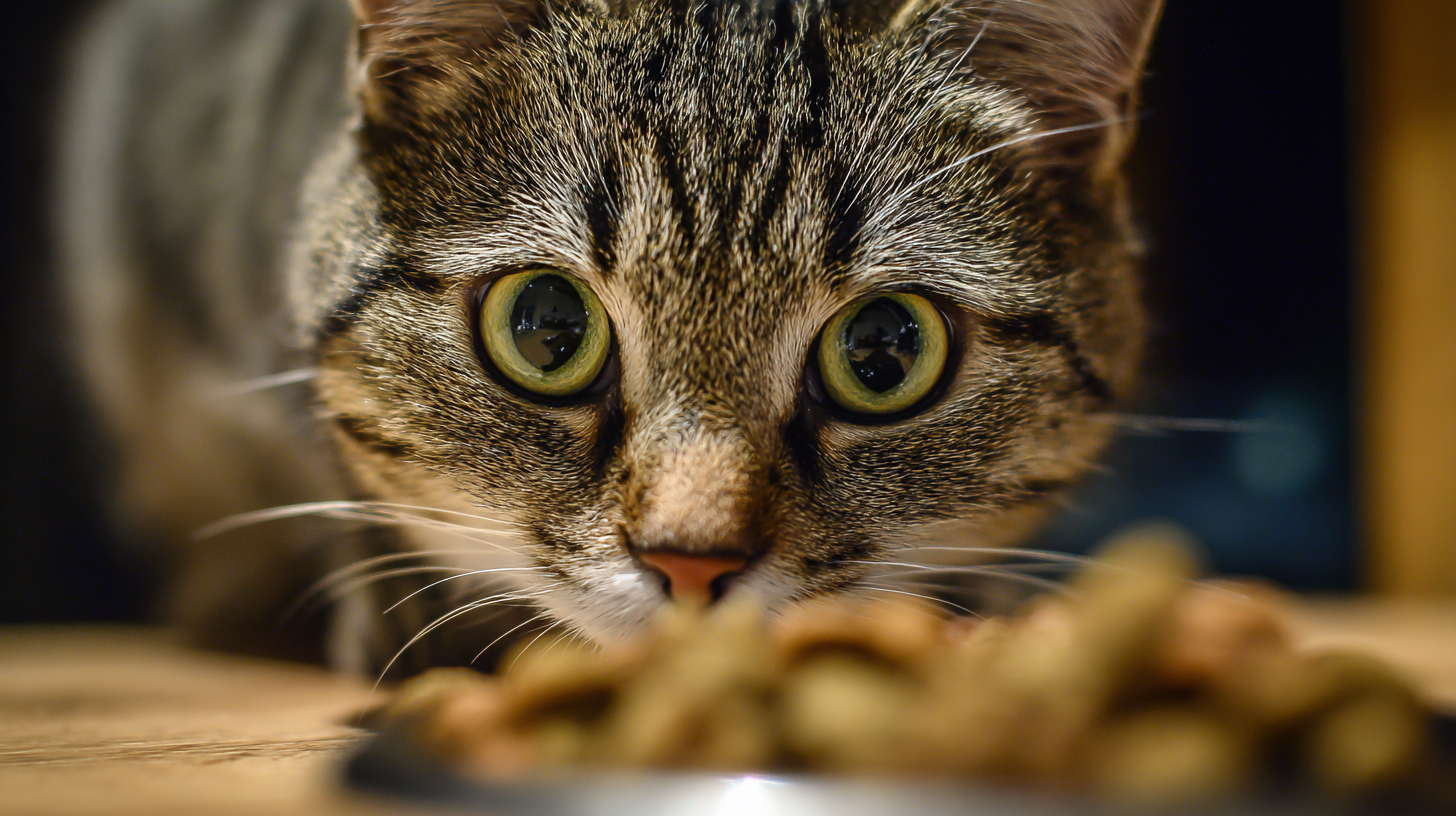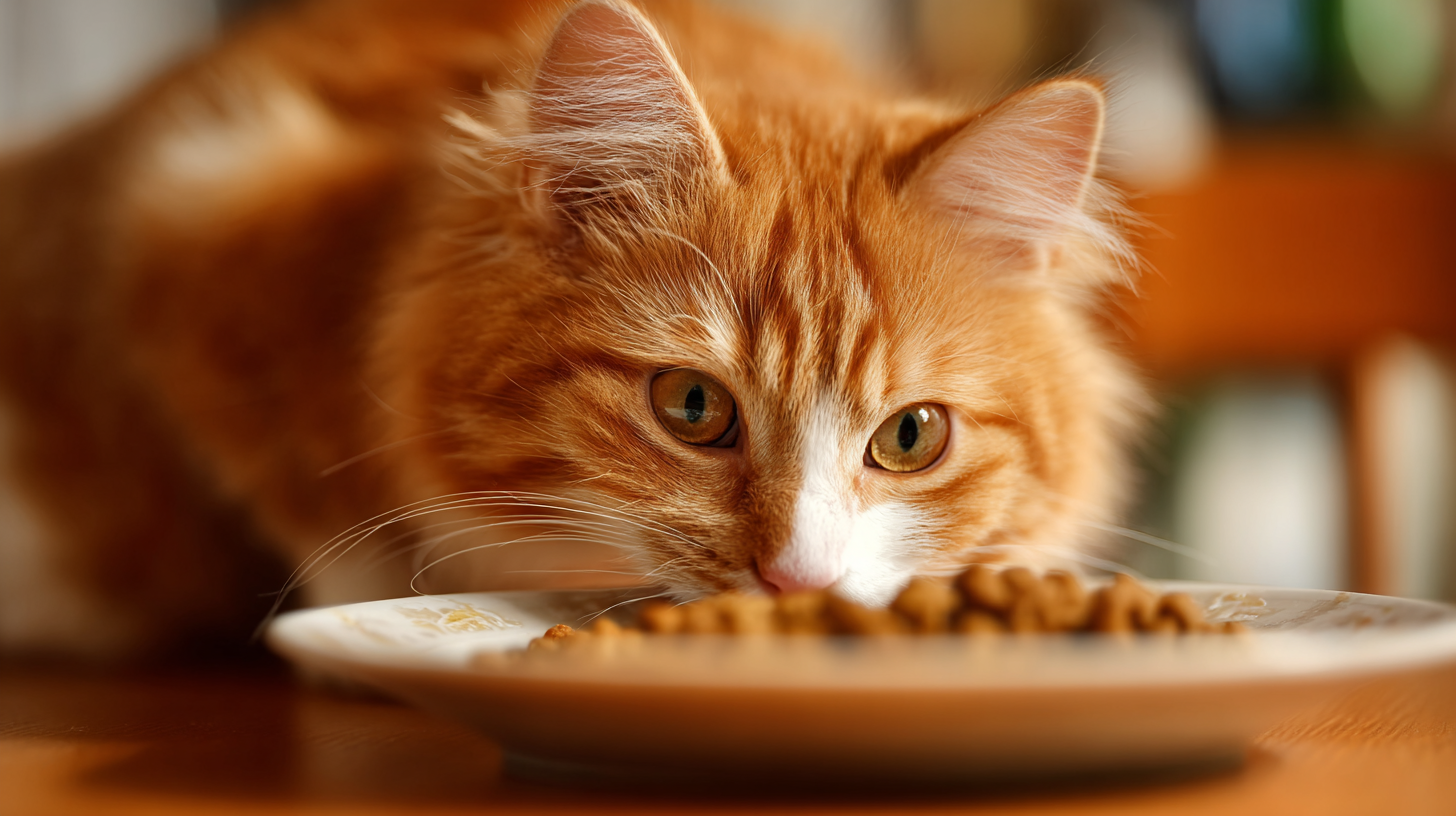In the quest for optimal feline nutrition, the importance of high-quality Kitty Wet Food cannot be overstated. According to a recent report by the American Pet Products Association (APPA), nearly 75% of cat owners are now choosing wet food options for their pets, recognizing the numerous health benefits associated with moisture-rich diets. Research has shown that Kitty Wet Food not only aids in hydration but also supports kidney health and optimal weight management. The Association of American Feed Control Officials (AAFCO) underscores that a balanced wet food diet is crucial for ensuring adequate protein intake and essential nutrients for cats, particularly as they age. With options now available that cater to various dietary needs, understanding how to select the best Kitty Wet Food can lead to enhanced well-being and longevity for our feline companions.

In 2025, understanding the nutritional needs of felines has taken on a new level of complexity. Pet owners are now more informed about the importance of a balanced diet that caters to the specific requirements of their cats. This includes a blend of proteins, fats, vitamins, and minerals, all essential for maintaining optimal health. Unlike in previous years, where dry kibble dominated the market, wet food has gained significant attention for its palatability and moisture content, making it a crucial component in meeting the hydration needs of felines.

Moreover, advancements in pet nutrition research have introduced a wider variety of ingredients in kitty wet food. This year, more brands are focusing on inclusivity, offering options that cater to dietary sensitivities and health conditions such as allergies or obesity. As pet parents become increasingly aware of the implications of their cats' diets on overall wellness, choosing high-quality wet food becomes imperative. This not only supports the physical health of cats but also enhances their vitality and longevity, reinforcing the significance of proper nutrition in the feline world.
When selecting high-quality wet cat food, it's essential to focus on the ingredients that promote optimal feline health. According to the Association of American Feed Control Officials (AAFCO), a well-balanced cat diet should primarily feature high-quality protein sources, such as real meat or fish, which aid in muscle development and overall health. Protein should be the first ingredient listed, as it provides the necessary amino acids that cats, being obligate carnivores, rely on for energy and vitality.

Furthermore, look for wet cat foods containing beneficial fats and omega-3 fatty acids, which support a healthy coat and skin. A report from the Pet Food Institute emphasizes that fatty acids not only enhance the palatability of cat food but also contribute to cognitive function and overall wellness. Ingredients like fish oil or flaxseed are excellent sources of these essential nutrients.
Finally, incorporating moisture-rich components—such as broth or vegetables—can further enhance hydration, an important aspect of feline health that studies indicate can prevent urinary tract issues in cats. By prioritizing these key ingredients, pet owners can effectively boost their cat's nutritional intake for a healthier and happier life.
In the quest for optimal feline nutrition, selecting the right wet cat food can significantly influence your cat's health and lifestyle. According to a recent industry report, wet cat food is particularly vital for hydration, especially for cats prone to urinary tract issues. Vet-recommended ingredients often include high-quality proteins, essential fatty acids, and nutrients that support kidney health—critical for senior and active cats alike. Notably, the moisture content in wet food can help prevent dehydration, which is especially beneficial during warmer months.
2025 has seen a variety of leading wet cat food brands emerge that excel in both palatability and nutritional content. A comparative analysis pinpointed that the best options are those crafted with real meat as the primary ingredient, devoid of artificial additives. Furthermore, ingredients like omega-3 fatty acids and fiber sources promote better digestion and overall well-being. As such, informed choices based on veterinary insights are essential for cat owners looking to enhance their pet's diet, ensuring that every meal serves not just to satisfy hunger but also to bolster health.
| Brand | Protein Content (%) | Fat Content (%) | Moisture (%) | Fiber Content (%) | Calories (per 100g) | Main Ingredients | Grain-free |
|---|---|---|---|---|---|---|---|
| Brand A | 30 | 15 | 78 | 2 | 100 | Chicken, Beef | Yes |
| Brand B | 32 | 12 | 80 | 3 | 90 | Turkey, Salmon | No |
| Brand C | 28 | 10 | 82 | 1 | 85 | Lamb, Sweet Potato | Yes |
| Brand D | 25 | 18 | 77 | 4 | 95 | Fish, Vegetables | No |
When it comes to feline nutrition, the debate between wet and dry cat food has been a longstanding one. Wet cat food offers several health benefits that can significantly improve your cat's overall well-being. One of the primary advantages is hydration; since cats are notorious for not drinking enough water, wet food provides an essential moisture boost, which helps prevent urinary tract issues and supports kidney function. Moreover, the higher protein content found in many wet foods promotes muscle health and can help maintain a healthy weight, especially for indoor cats that may lead a more sedentary lifestyle.
In addition to hydration and protein, wet food often contains fewer carbohydrates than dry food, aligning more closely with a cat's natural dietary needs. This reduced carbohydrate content can lead to better digestion and lower blood sugar levels, which is crucial for cats prone to diabetes. Furthermore, the texture and aroma of wet cat food can be more appealing, making it easier for picky eaters to enjoy their meals. With these health benefits in mind, choosing the right wet food can play a vital role in ensuring optimal nutrition for your feline companion.
As the pet food industry continues to evolve, emerging trends in wet cat food are leading the charge in feline nutrition. One of the most significant shifts is the growing demand for moisture-rich nutrition, which is set to make the wet pet food market reach USD 42.16 billion by 2035. This surge is largely attributed to the humanization of pets, where owners increasingly seek food options that mirror their own dietary preferences. This trend emphasizes not only palatability but also the importance of hydration, as proper moisture content plays a crucial role in feline health.
Moreover, innovations in gut health are becoming paramount as pet owners become more informed about the benefits of digestive wellness. The cat food industry is witnessing a rise in formulations that include prebiotics and probiotics, catering to the trend of pet supplements. According to recent insights, these advancements in gut health reflect a growing consumer desire for functional benefits in their pets' diets. With an increasing focus on natural ingredients, personalized nutrition profiles, and sustainability, the landscape of wet cat food is rapidly transforming, promising a healthier future for our feline companions.
